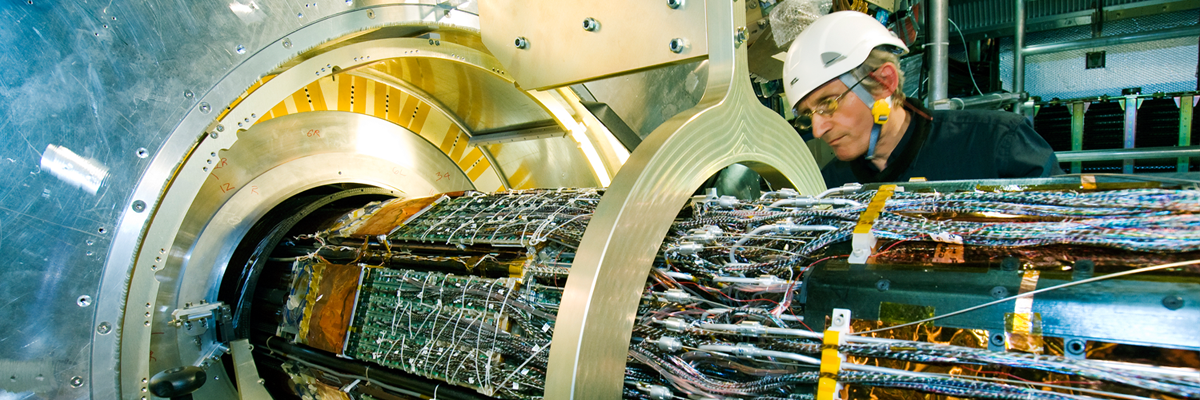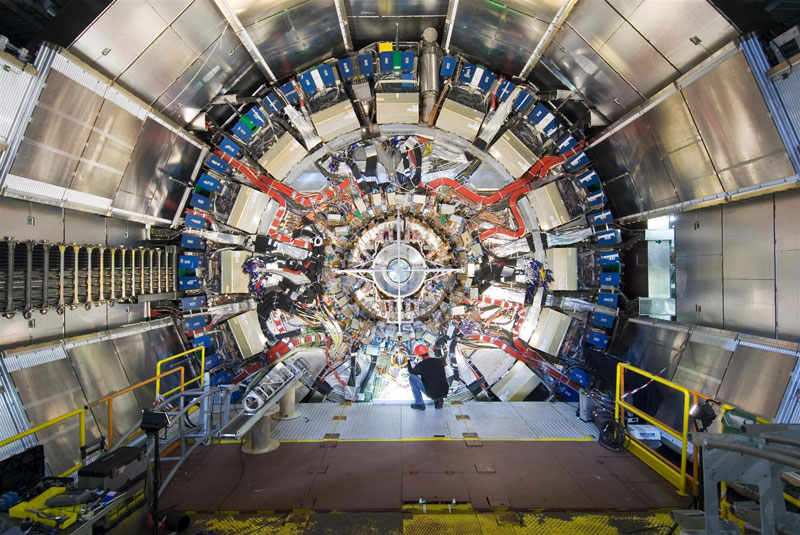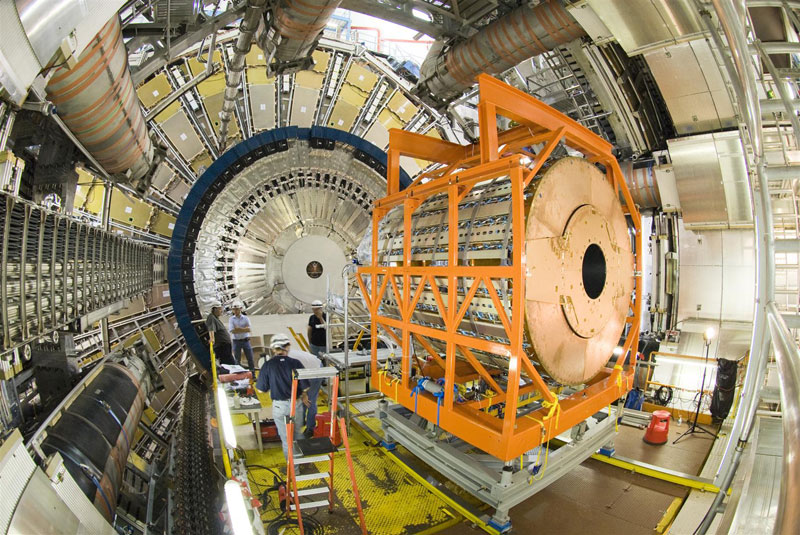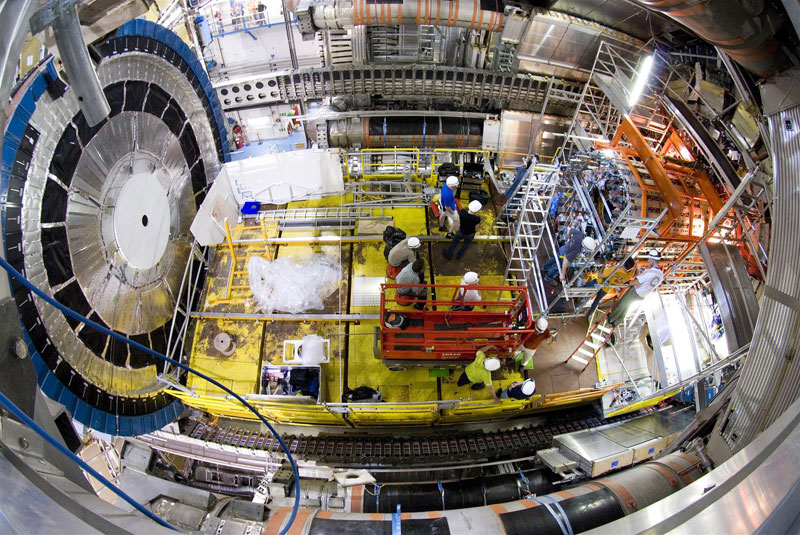Access to Collaboration Site and Physics Results
The Inner Detector

The inner detector is the first part of ATLAS to see the decay products of the collisions, so it is very compact and highly sensitive. It consists of three different systems of sensors all immersed in a magnetic field parallel to the beam axis. The Inner Detector measures the direction, momentum, and charge of electrically-charged particles produced in each proton-proton collision.
The main components of the Inner Detector are: Pixel Detector, Semiconductor Tracker (SCT), and Transition Radiation Tracker (TRT).
Pixel Detector
- 80 million pixels (80 million channels). Area 1.7m2. 15 kW power consumption
- The detector has 1,744 modules (10cm2) with 46,080 readout channels per module
- Pixel size 50 x 400μm2 . Resolution 14 x 115μm2
- Three Pixel disks (in each endcap) have 6.6 million channels
- 3 barrel layers: 1,456 modules (i.e. 67M pixels)
- 3 disks in each end-cap: 288 modules (i.e. 13M pixels)
Semiconductor Tracker
- A silicon microstrip tracker consisting of 4,088 two-sided modules and over 6 million implanted readout strips (6 million channels)
- 60m2 of silicon distributed over 4 cylindrical barrel layers and 18 planar endcap discs
- Readout strips every 80μm on the silicon, allowing the positions of charged particles to be recorded to an accuracy of 17μm per layer (in the direction transverse to the strips)
Transition Radiation Tracker
- 350,000 read-out channels
- Volume 12m3
- Basic detector element: straw tube with 4mm diameter, in the centre a 0.03mm diameter gold-plated tungsten wire
- 50,000 straws in Barrel, each straw 144 cm long. The ends of a straw are read out separately
- 250,000 straws in both endcaps, each straw 39 cm long
- Precision measurement of 0.17 mm (particle track to wire)
- Provides additional information on the particle type that flew through the detector, i.e. if it is an electron or pion

The first ATLAS inner detector end-cap after complete insertion within the Liquid Argon Cryostat.

The installation of the ATLAS inner detector end-cap C.

An ATLAS inner detector end-cap is placed in its cryostat. The instrumentation housed inside the inner end-cap must be kept cool to avoid thermal noise. This cooling is achieved on ATLAS by placing the end-cap inside a liquid argon cryostat. The end-cap measures particles that are produced close to the direction of the beam pipe and would otherwise be missed.
This colourful 3D animation is an excerpt from the film "ATLAS-Episode II, The Particles Strike Back". With a bug's eye view of the inside of the detector, the viewer is taken on a tour of the inner workings of the transitional radiation tracker within the ATLAS detector. Subjects covered include what the tracker is used to measure, its structure, what happens when particles pass through the tracker, how it distinguishes between different types of particles within it. (Video: CERN)





